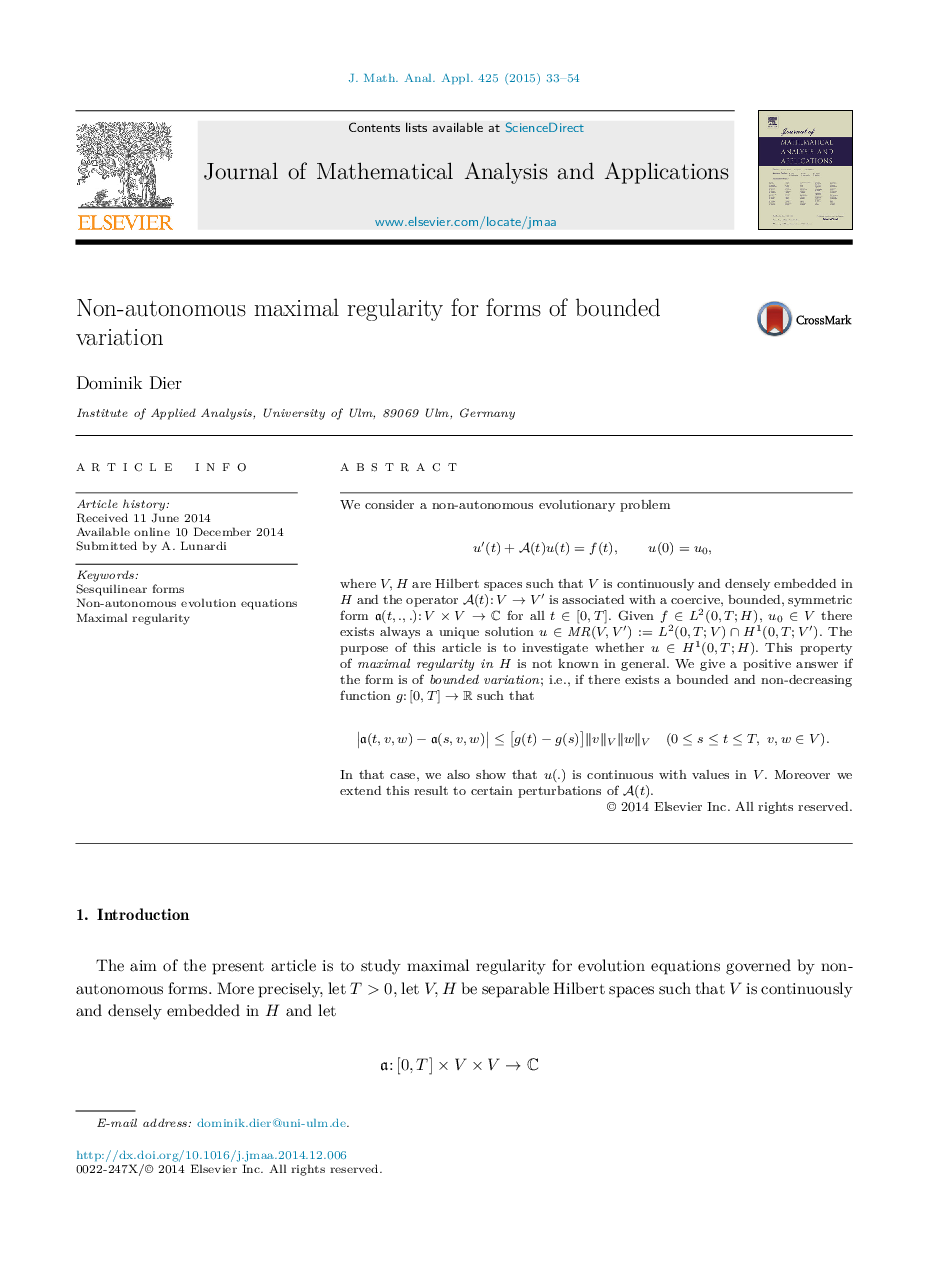| Article ID | Journal | Published Year | Pages | File Type |
|---|---|---|---|---|
| 4615310 | Journal of Mathematical Analysis and Applications | 2015 | 22 Pages |
Abstract
We consider a non-autonomous evolutionary problemuâ²(t)+A(t)u(t)=f(t),u(0)=u0, where V,H are Hilbert spaces such that V is continuously and densely embedded in H and the operator A(t):VâVâ² is associated with a coercive, bounded, symmetric form a(t,.,.):VÃVâC for all tâ[0,T]. Given fâL2(0,T;H), u0âV there exists always a unique solution uâMR(V,Vâ²):=L2(0,T;V)â©H1(0,T;Vâ²). The purpose of this article is to investigate whether uâH1(0,T;H). This property of maximal regularity in H is not known in general. We give a positive answer if the form is of bounded variation; i.e., if there exists a bounded and non-decreasing function g:[0,T]âR such that|a(t,v,w)âa(s,v,w)|â¤[g(t)âg(s)]âvâVâwâV(0â¤sâ¤tâ¤T,v,wâV). In that case, we also show that u(.) is continuous with values in V. Moreover we extend this result to certain perturbations of A(t).
Keywords
Related Topics
Physical Sciences and Engineering
Mathematics
Analysis
Authors
Dominik Dier,
